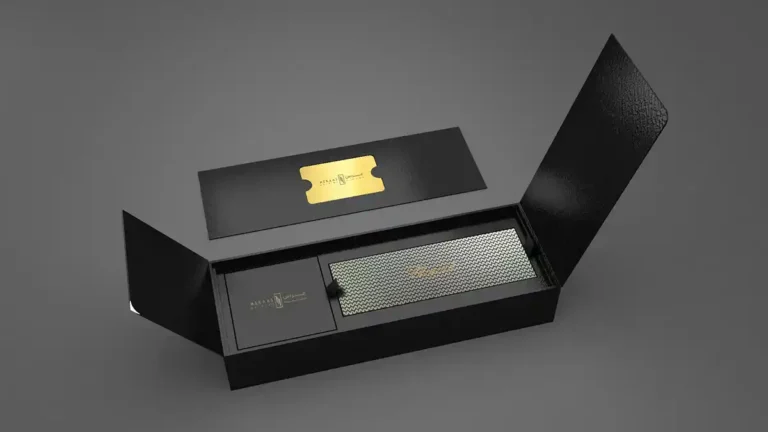Vertical Labret Piercing: What You Need to Know
When it comes to body piercings, the vertical labret is gaining significant attention. With its unique placement and aesthetic appeal, this piercing offers a bold statement. If you’ve been considering getting a vertical labret piercing, this guide is for you. We’ll cover everything from the procedure to aftercare, including healing time and potential risks. By the end of this article, you’ll be equipped with all the information you need to decide if this piercing is right for you.
What is a Vertical Labret Piercing?
A vertical labret piercing is a type of lip piercing that involves placing two holes in your lower lip. One hole is positioned just below the lip, and the other goes through the center of the lip itself. It differs from the traditional labret piercing, which goes horizontally through the lower lip. The vertical labret is also sometimes referred to as the “vertical lip piercing” due to its orientation.
This piercing is often favored for its bold and edgy look. The vertical positioning adds an extra layer of visual interest compared to a regular labret, making it popular among those who want to stand out.
Procedure for Getting a Vertical Labret Piercing
The procedure for a vertical labret piercing is relatively straightforward but requires a skilled piercer. Here’s what you can expect during the appointment:
- Consultation: The piercer will discuss your anatomy to ensure that you are a good candidate for the piercing. Not everyone’s lip structure is suitable for this type of piercing, so this step is crucial.
- Marking the Area: The piercer will mark the entry and exit points of the piercing on your lip. This step ensures that the holes are placed symmetrically and at the right angles.
- Piercing Process: After confirming the markings, the piercer will use a sterilized needle to create two small holes in your lip. The needle is typically hollow, which makes the process smoother and minimizes tissue damage.
- Jewelry Insertion: Once the holes are made, the piercer will insert a curved or straight barbell through the holes. The jewelry is usually made of titanium, stainless steel, or biocompatible materials.
- Aftercare Instructions: You will be given aftercare instructions to ensure proper healing. This typically includes avoiding certain foods, cleaning the piercing, and avoiding touching the area with dirty hands.
The process usually takes about 20 to 30 minutes. While it may seem intimidating, a professional piercer will ensure the procedure is done as smoothly and comfortably as possible.
Pain Level of a Vertical Labret Piercing
One of the most common questions people ask about vertical labret piercings is, “How much does it hurt?” Pain tolerance varies from person to person, but most individuals describe the pain as a brief pinch during the initial piercing. The vertical labret is generally considered to be a medium-pain piercing compared to others like nostril or eyebrow piercings.
You may experience some swelling and soreness for the first few days following the procedure, but this is normal. The pain level is typically manageable, and any discomfort should subside within a week or so.
Healing Time and Aftercare
The healing time for a vertical labret piercing can vary from person to person. On average, it can take anywhere from 6 to 8 weeks for the initial healing phase. However, full healing can take up to 6 months, depending on individual factors such as lifestyle, how well you care for the piercing, and your body’s natural healing rate.
Aftercare Tips:
- Clean the Piercing: Use a saline solution to clean the piercing twice daily. Avoid using alcohol or hydrogen peroxide, as these can irritate the tissue and delay healing.
- Avoid Touching: Always wash your hands thoroughly before touching your piercing. Touching it with dirty hands can introduce bacteria, leading to infection.
- Avoid Certain Foods: During the first few weeks, it’s best to avoid spicy, hot, or acidic foods that can irritate the piercing.
- No Kissing or Oral Contact: Try to avoid kissing or oral contact until the piercing is fully healed to prevent the introduction of bacteria.
- Avoid Sleeping on the Piercing: Try to sleep on your back and avoid putting pressure on the piercing, as this can cause irritation.
If you notice signs of infection, such as excessive redness, discharge, or pain that worsens over time, contact your piercer or a healthcare professional immediately.
Jewelry Options for a Vertical Labret Piercing
When it comes to jewelry for your vertical labret piercing, there are several options to choose from. The most common jewelry styles for this piercing are barbells, either straight or curved.
Straight Barbell: A straight barbell is typically used in a vertical labret piercing. It offers a clean and classic look. The jewelry is often made of materials like titanium or surgical steel, which are ideal for healing and minimizing irritation.
Curved Barbell: Some individuals prefer a curved barbell for a slightly more distinct look. The curve can help reduce friction with the lip, which may enhance comfort during the healing process.
Material Choices: When selecting jewelry, ensure that you use hypoallergenic materials such as titanium, niobium, or surgical steel. These materials are less likely to cause irritation or allergic reactions compared to cheaper alternatives like nickel.
As you heal, you may want to switch to smaller jewelry if the initial piece feels too bulky or uncomfortable. However, always wait until the piercing is fully healed before making any changes to the jewelry.
Risks and Potential Complications
While vertical labret piercings are generally safe when performed by a professional piercer, there are some risks involved. Understanding these risks can help you make an informed decision before moving forward with the piercing.
Infection: This is the most common risk associated with any body piercing. Infection can occur if the piercing is not properly cleaned or if the jewelry is touched with dirty hands.
Swelling and Pain: Swelling and mild pain during the first few days are normal. However, if the swelling becomes severe or the pain persists, it could be a sign of infection or another complication.
Scarring: As with any piercing, there is a chance of scarring. Scarring can occur if the piercing is irritated or if proper aftercare isn’t followed.
Rejection: In some cases, the body may attempt to reject the piercing, especially if it’s not positioned properly. This can cause the jewelry to be pushed out of the skin, resulting in a partially healed or poorly healed piercing.
To minimize these risks, always choose a reputable piercer who uses sterilized equipment and follows proper safety protocols.
Conclusion
A vertical labret piercing is a bold and stylish option for those looking to make a statement with their appearance. While the procedure is relatively simple, it’s essential to take proper care during the healing process to avoid complications. With the right aftercare, your vertical labret piercing will heal beautifully, adding a unique touch to your facial features.
If you’re considering getting a vertical labret piercing, remember to choose a professional piercer who has experience with this type of piercing. Follow all aftercare instructions, and give your body the time it needs to heal. By doing so, you’ll be able to enjoy your new piercing for years to come.






